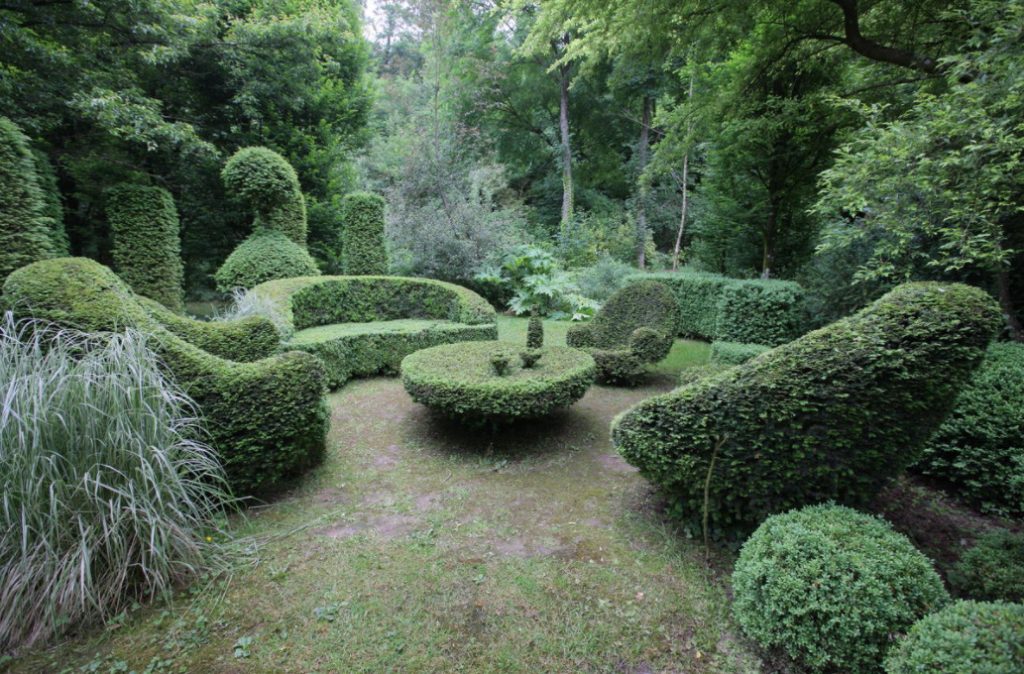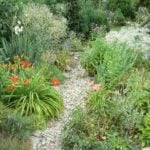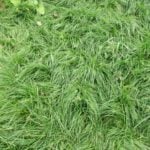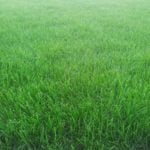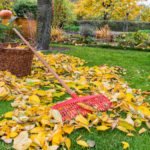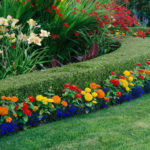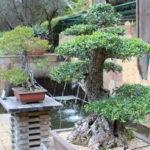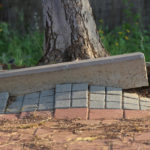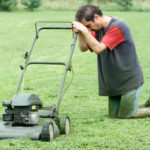Unfortunately, not so often there is a non-standard approach to cutting plants. Let’s not complain about our climate again, about the lack of plants that are used in this particular case. I agree that boxwood and yew trees grow here, but it is unlikely that the same experiments are possible with them.
However, let’s look at the problem from the other side. Maybe it makes sense to complain first of all not about the climate, but about the lack of imagination? After all, looking at the first photo, you can see absolutely clearly that the idea was the primary one here, and then the person was looking for the means to implement it. It is this idea that interests so much everyone passing by (this is evidenced by the completely trampled earth around), and not the shorn plants themselves. We usually first pick up the tool and material, and then decide what to do.
Let’s also try to start with ideas, and we will not be limited only to sets of living garden furniture and sets on it: this idea does not count, it is already suggested to us by the picture. So, cutting plants as a creative process. Let’s try to diversify the standard set of “shorn” stories. Let’s dream it up.
Topiary pillars…
You can make the load-bearing pillars of your pergola or some kind of canopy with a lattice roof quite interesting. To do this, around the real pillars that support the roof (even if they are the most primitive metal pipes), we plant plants that can bear cutting, and begin to cut them. In cross-section, it can be a circle, a square, a triangle, a Pentagon, or anything else.
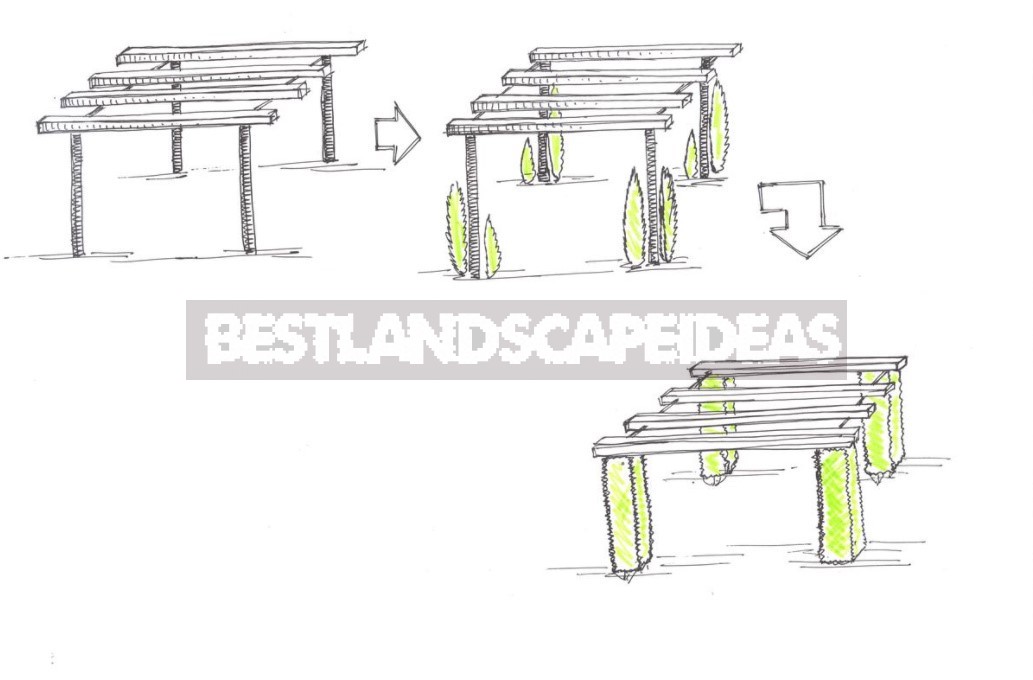
As a result, the pole eventually turns out to be inside a sheared parallelepiped or cylinder, and it seems that the beams are lying on plants.
… and lanterns
The thought works further. And if, for example, we make such a casing around the lantern and also cut it?
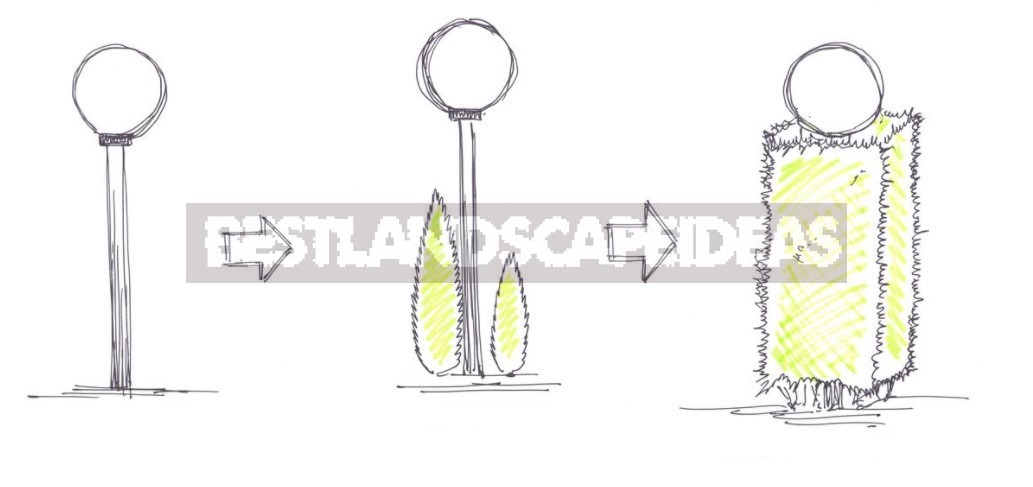
And if around the sculpture in the garden? If this is a sculptural image of a bird, it will have the full feeling that it is sitting on a shorn plant.
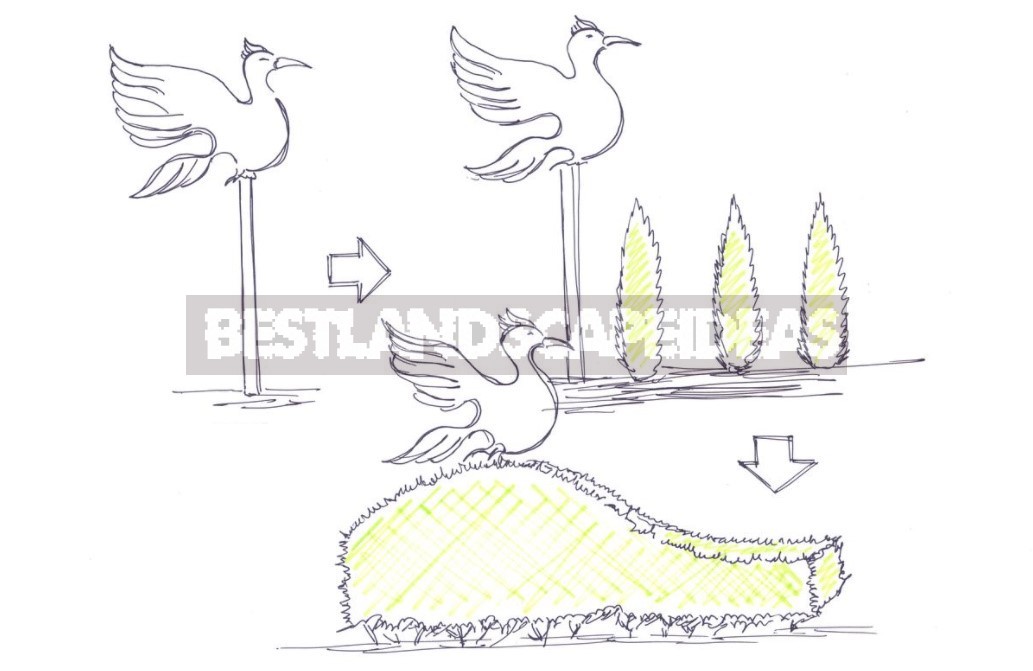
The sculpture can be located not only at the top of the support, but also on the side, and then our version is transformed into something interesting: a snail crawling along a hedge, or a butterfly perched on the edge of a barberry border.
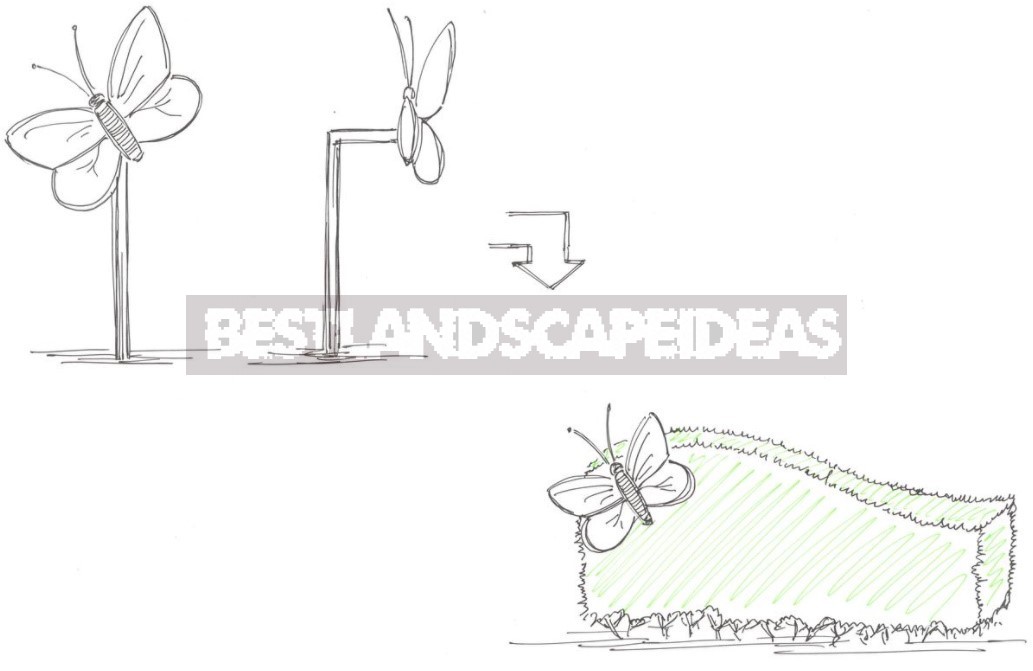
And if it is not a sculpture, but, for example, a wall fountain or even a side lamp (or lamps) that illuminates the path along the hedge in which it is “embedded”? Fantasy can, of course, play out and lead to something at all, as in the picture below. Why not?
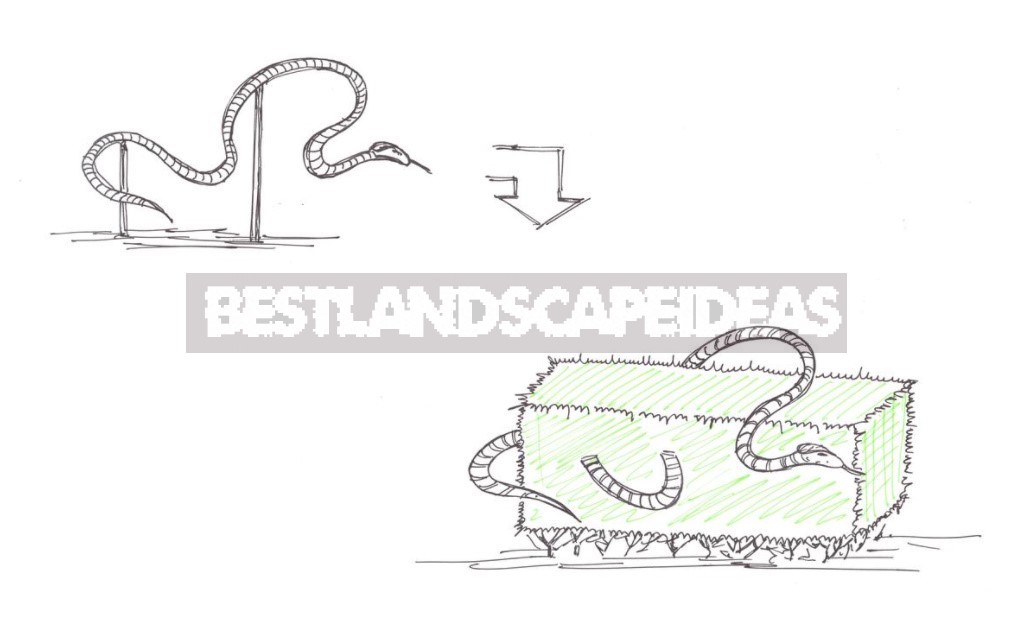
Developing further the theme of lampposts, we come to interesting options for fencing. After all, the light poles can, in fact, become the pillars of the fence.
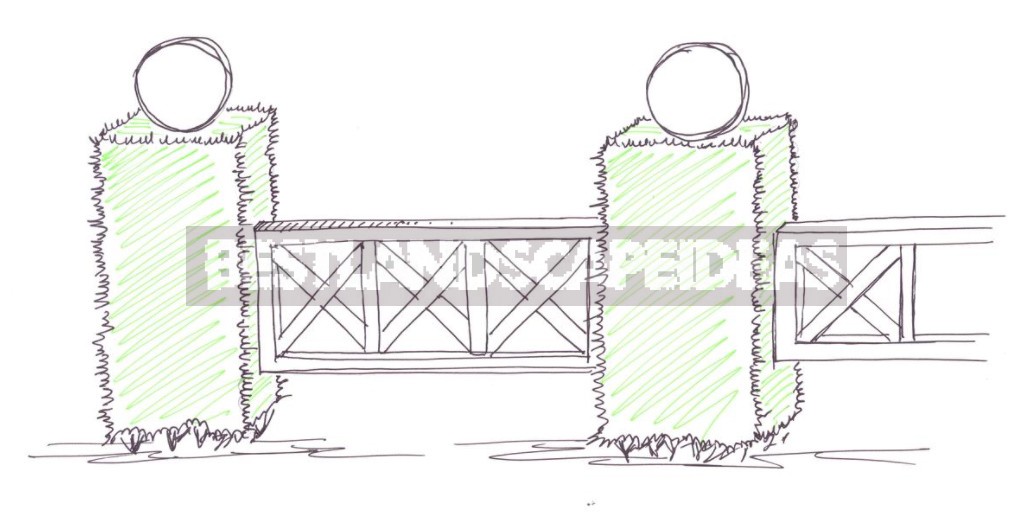
And also Vice versa, the poles are real, and the fence itself is shorn.
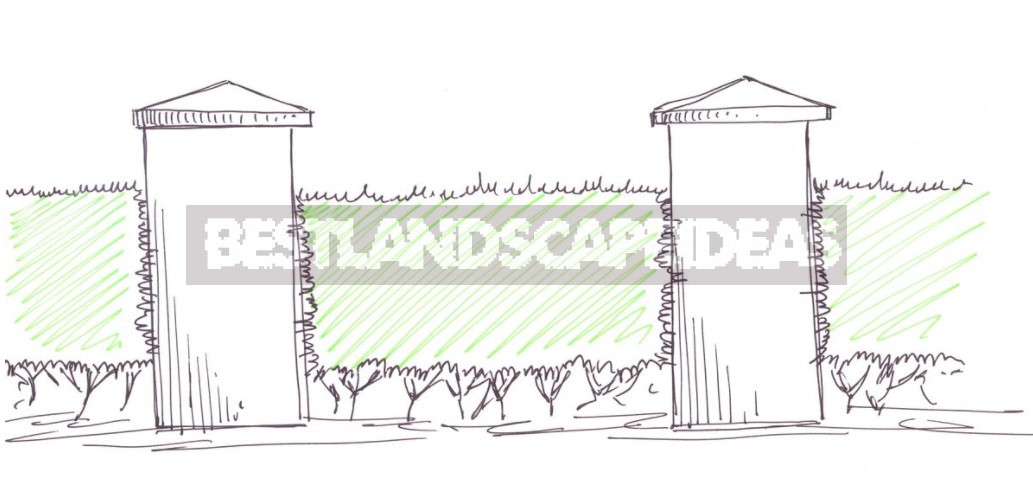
Shorn in the package
But why do we always talk about plants that frame certain inanimate details (a lantern, sculpture, etc.)? Maybe the opposite situation is also possible? Let’s think about it.
Not only that, it’s real, and it’s quite interesting: we are not a metal pole “wrap” clipped plants, but rather a pillar of clipped plants beautifully decorate the wrapper, leaving that cut inside (for example, white backdrop for sheared Norway spruce, which is known to be quite dark).
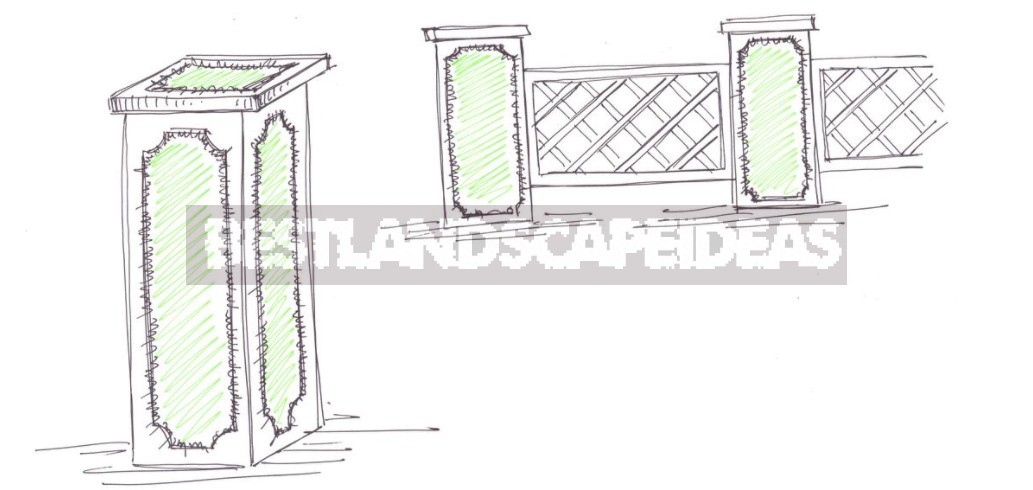
What problem can arise here? The fact is that plants can not be cut along the same line. Each subsequent cut is made slightly, but higher than the previous one, otherwise sooner or later the plant will be very bare. Accordingly, the size will be slightly, but still increase. And there is a risk that the frame will be inside the plant. Therefore, you need to be more careful when choosing it. If they are finger-thick rods, they will disappear quite quickly. You will not see them, even if they are painted in a color that contrasts with the plant cut inside them. But if they are wide slats, as in our drawing, even the exits of plants from their borders will not harm the idea.
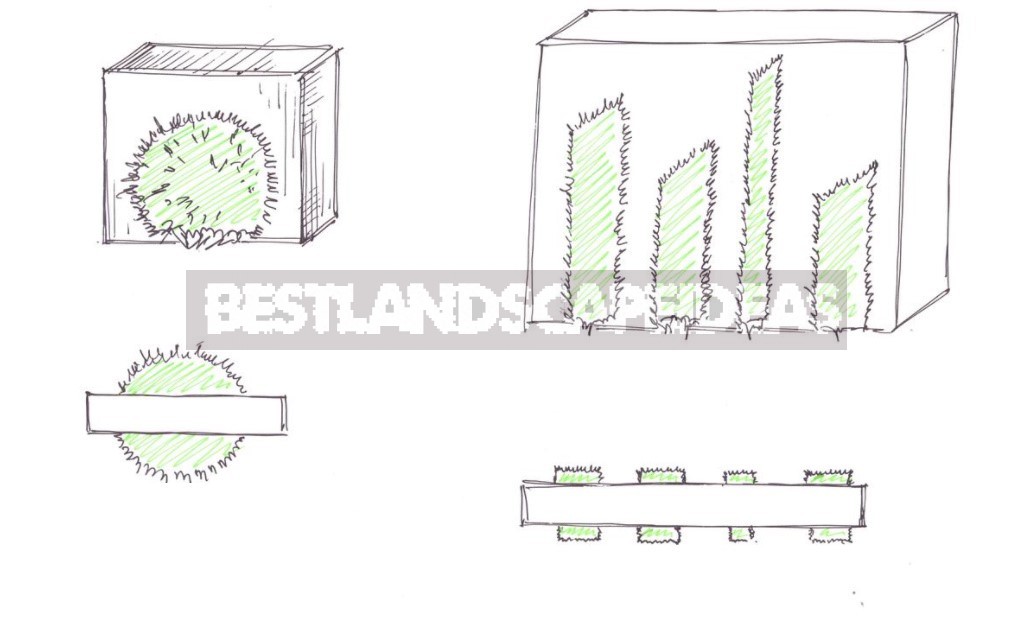
But if pillars are a fairly simple thing, then some sculptural art objects in the garden that would use both architectural forms and shorn plants are where the imagination can really play out.
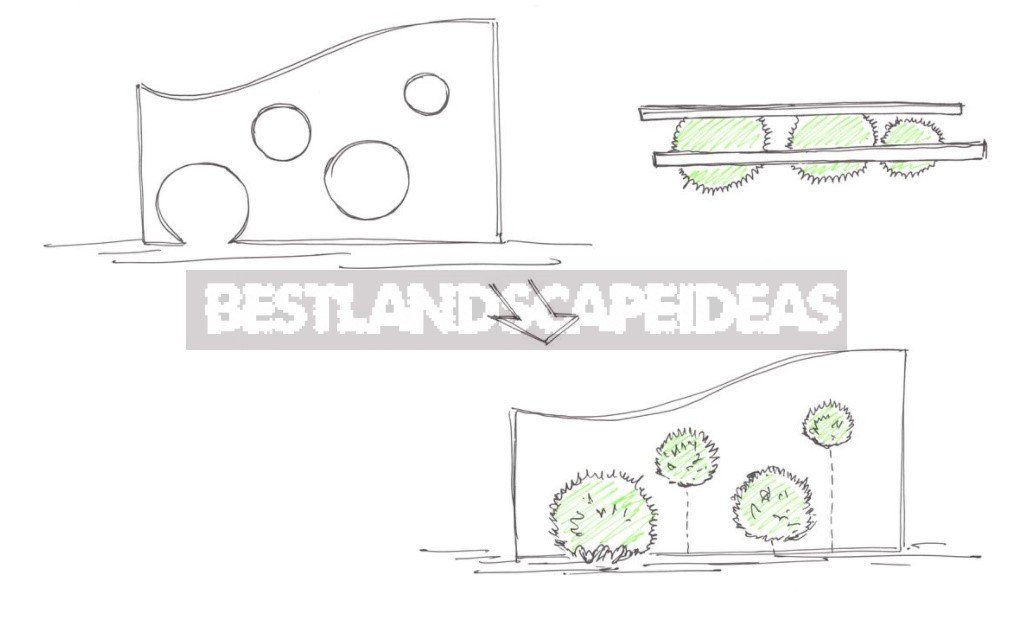
We have a picture of primitive balls that seem to hang on the wall. But it can also be some kind of drawing, or even some inscriptions. When there are so many planes that frame shorn plants, we are not so afraid of the fact of the constant increase in the size of shorn plants, which we discussed above. The color in this case should also be different from the color of the plants that we are cutting. For example, the background is black, and the pattern cut in it is bright yellow (you can make it from yellow-coniferous forms and varieties of Western thuja).
And if you try to form furniture?
The fantasy plays out further, and now we have already found a way out, how to grow spectacular plants in containers at the entrance and so on in the middle zone. What is the main problem of such landings? The only problem is freezing of containers in winter. And those plants that feel great in the ground, being planted in a container, usually freeze out. How do I solve this? All the same, framing the living with the inanimate.
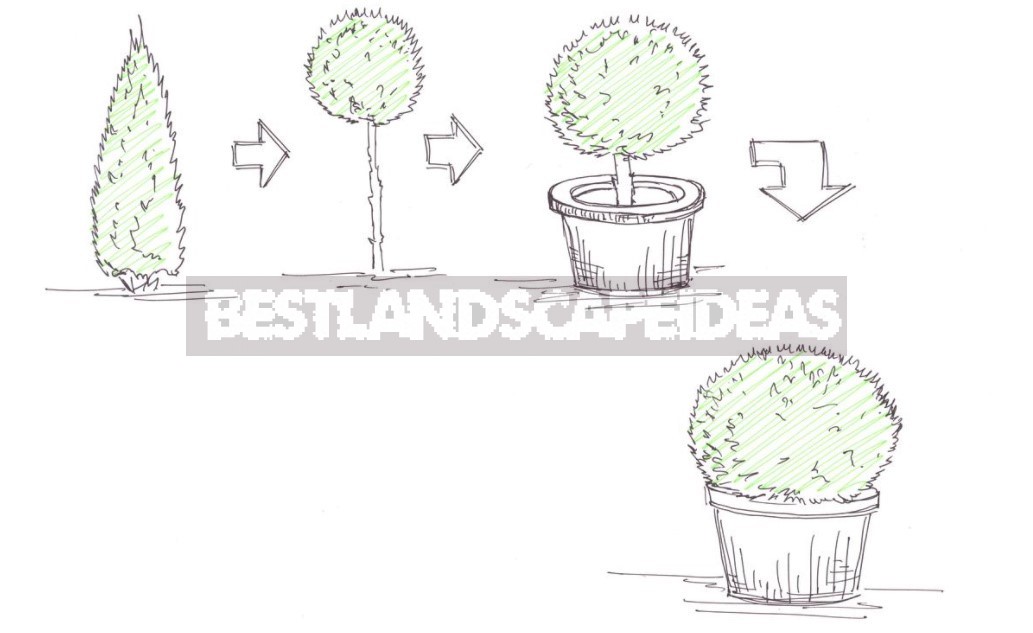
We plant a plant, then put a container without a bottom on it, and cut the part of the plant above the container into whatever we want: a ball, a pyramid, a cone, and so on. You can go further and thus (in a container without a bottom) plant a tree or a beautiful stamp form. But so that there is no hole between the trunk and the walls of the container (you can’t fill the ground), we plant plants there that will be cut horizontally when they grow to the top of the container.
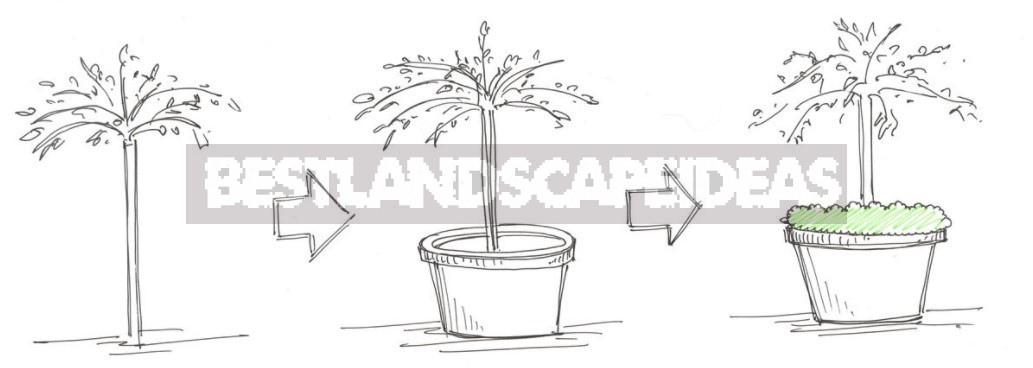
But in this way you can design stairs, and water devices, and, in the end, build interesting garden furniture.
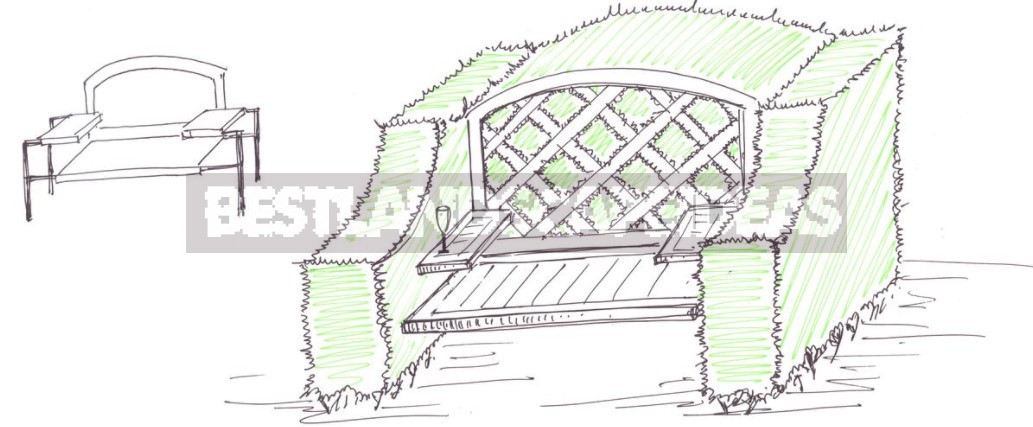
A little more imagination, it is not necessary to dwell on the fact that the fence is only there, and only a fence of wood. Combine them, and you will get very non-trivial things.
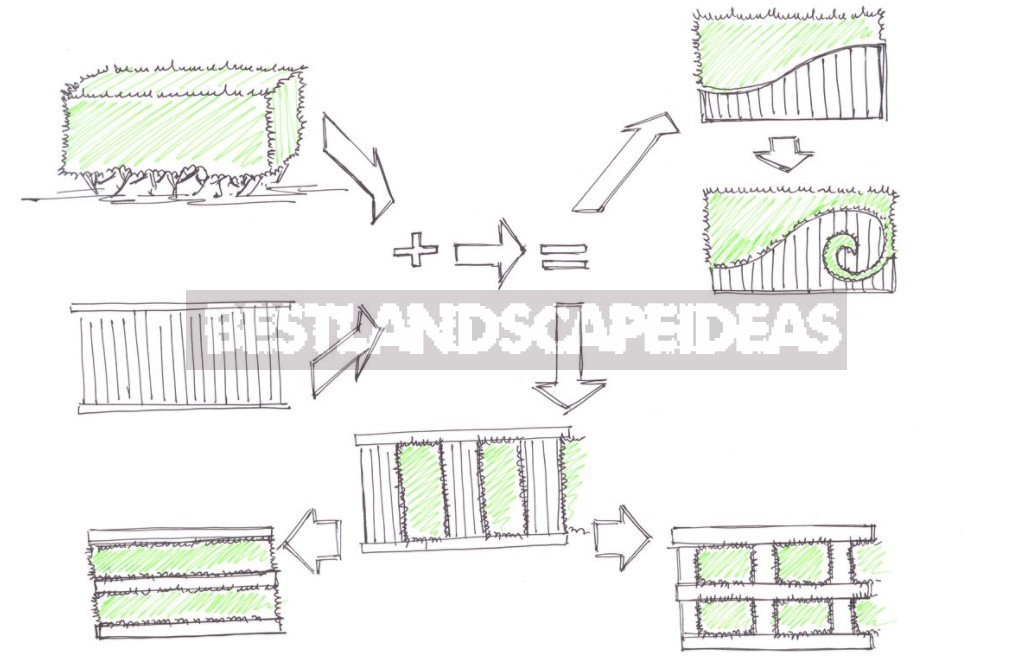
By the way, speaking of stairs, you immediately remember the terrain. There is a lot of talk about geoplastics now. But it can also be done at the expense of shorn plants, without moving a kilogram of soil.
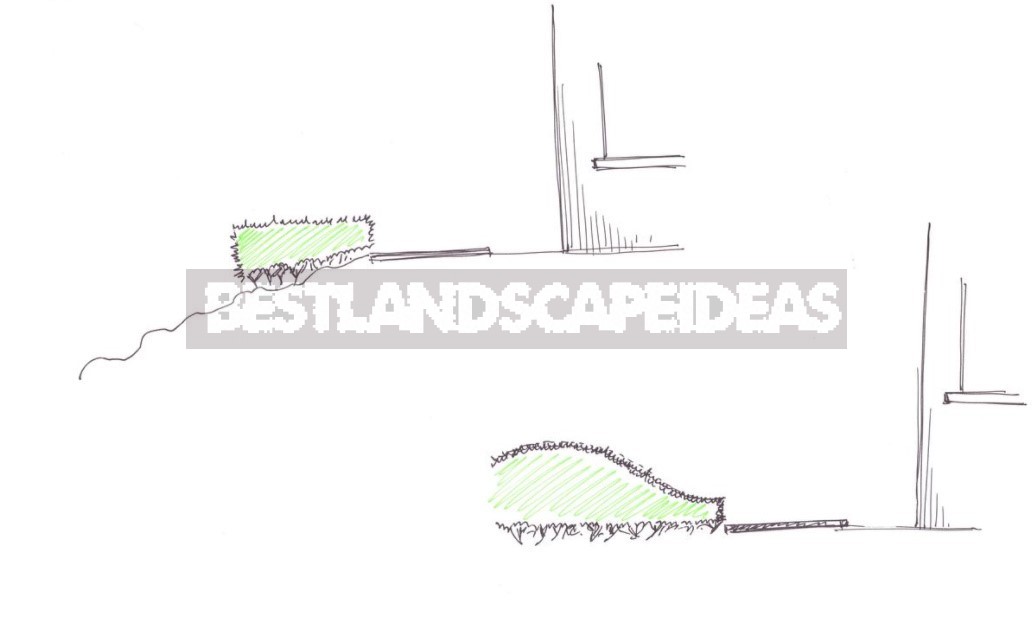
However, just like creating a terrain on a site using haircuts, we can also level the existing terrain with plants.
Shorn + shaggy
Here’s what I thought: why are we only talking about combining clipped plants and inanimate forms? And if you try to combine the living with the living, but one will be shorn, and the other – in its natural form? It turns out that even here our imagination has a place to play out.
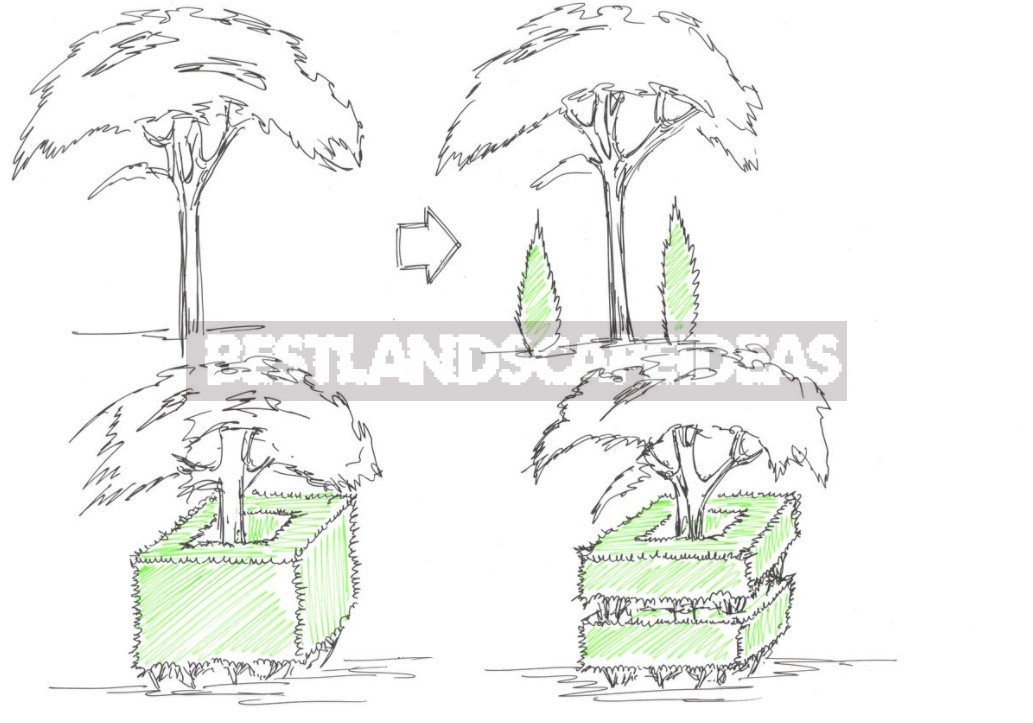
For example, you can even cut a pot in which it will grow for an adult tree or some kind of stamp form in the garden. We plant the stem Hydrangea paniculata with thuja, from which we then cut the flowerpot. And then the stem hydrangea will become a luxurious bouquet in a vase carved from malachite, which is actually cut from Thuja occidentalis ‘Smaragd’.
In this situation, however, it is possible that the root systems will begin to compete, and you will need to put root feeders in the pit immediately, in order to additionally feed the plants with fertilizer solutions.
In fact, there are a million options besides those listed. The main task of this article is not to tell about all possible ones, but only to show that you can move away from stereotypes and find non-standard solutions.
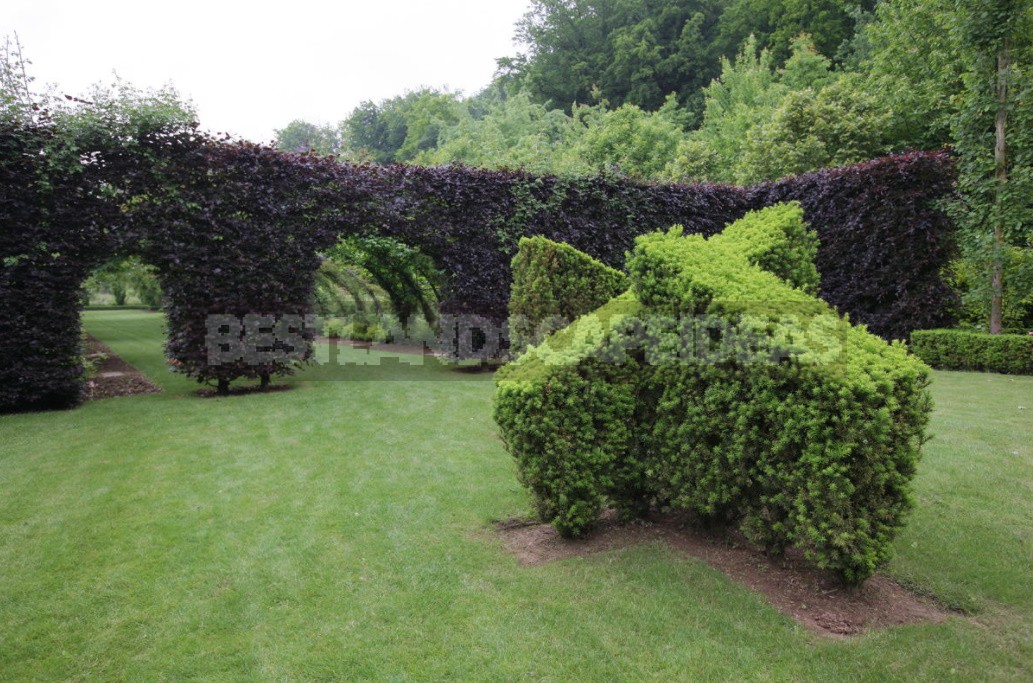
Creativity, creativity and more creativity, otherwise it will just be a garden, like everyone else. And it should be exactly yours. Good luck!
